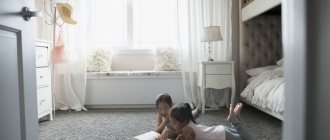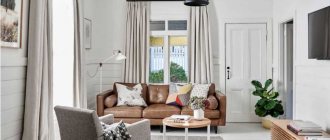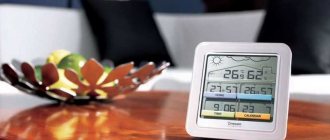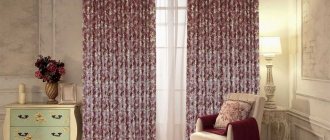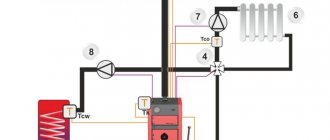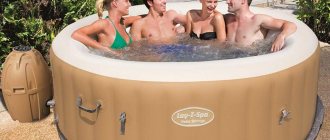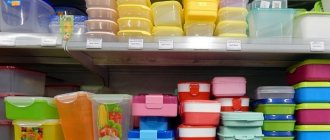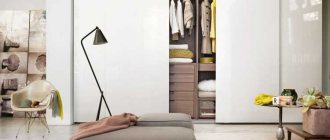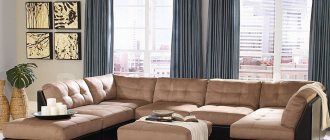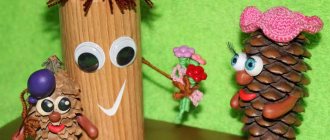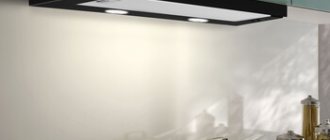Basic styles
Aquarium science distinguishes several types of aquarium design. But everyone is able to complement and improve aquadesign. Below are the main decorative styles for aquariums.
Dutch
This style first appeared in the middle of the last century and is still popular among aquascapers. The peculiarity of the Dutch style is the more, the better, or the complete filling of free space. This is especially true for the bottom part. Do not leave empty areas at the bottom. A large amount of vegetation of different levels is planted, the contrast of red and green colors is especially welcome. In the middle, attention is drawn to a snag or a structure made of large stones.
Pseudo-sea
Creating a pseudo-marine style does not require large investments. It requires standard soil and undemanding plants. The backlight is preferably blue. For additional resemblance to the sea, shells, artificial shells, and corals are used for the soil.
Natural
When using a natural style, it is important to create an interconnected and holistic composition of nature. There are several completed variations in the natural style:
- Rock garden. The main part of the decorations are stones. Sometimes stone figures have a hidden meaning.
- Iwagumi. Stones and Japanese dwarf trees are used, complemented by figures of houses, ships, and boats.
- Reboku. The focus is on driftwood and large stones.
- Wabi-kusa. A distinctive feature of this option is the presence of a moss hummock above the surface of the water. The plant that is used as tussock is called wabi-kusa, hence the name.
Collector's
The Dutch style is inaccessible to many, especially beginners. Therefore, a simplified Dutch collector style was created. The essence of this style is to plant small-leaved, fast-growing plants and wait until they grow and occupy the entire soil. For the collector style, you will need a volume of 100–200 liters. In a small space the effect will not be achieved.
Unforced Herbalist
In an unformed herbalist, plants play the main role and the focus is on them. Plants grow naturally in it, without human influence, and look natural.
Boosted Herbalist
In the forced herbalist, the emphasis is also on vegetation. The inhabitants are in second place. In such a herbalist, a certain level of gases and fertilizers is maintained to create lush vegetation.
Plot
This style consists of decorating a container in the theme of a certain plot. This could be the plot of a book, film, or story. The plot style is done through thematic figures, the creation of colors and shapes.
Vanguard
Avant-garde style is non-standard. Fits well into unusual and bright rooms. Most often artificial plants, unusual light, and brightly colored soil are used.
Biotope
The biotope style involves copying the structure of a natural body of water. This is the use of the same stones, the introduction of the same plants into the aquarium or local fish.
Fashionable aqua design styles
Aquarium design has several fashionable styles, some of which are already called classic. These areas include the following:
- Dutch;
- collector;
- Japanese;
- pseudo-natural;
- fairy.
The culture of Asia, Europe and America has found its new embodiment in incredibly spectacular designs of freshwater aquariums. At first glance, it is impossible to repeat such landscape masterpieces with your own hands, but if you take a closer look, you can discover interesting techniques and individual details that can help an inexperienced person design a home aquarium on their own.
Realistic Holland
The designers brought the depth of perspective and uncomplicated realism characteristic of the paintings of famous Dutch painters into the world of aquarium keeping. To create a Dutch-style aquarium, many different plants are used, which differ from each other in color and size.
In this case, tall algae with lush thread-like or small leaves are placed in the background. Shoots decorated with large foliage are planted in the middle. And the lowest bushes, along with those plants that imitate grass, are placed in front. This technique allows you to create the feeling of a deep landscape consisting of several tiers.
Green algae of various shades are planted, as well as brown, red and yellow. They are placed so that each plant occupies about 10 square centimeters of soil. This planting is considered dense, but at the same time it allows algae to actively develop, forming the famous green landscape of the Netherlands.
If you place small bright fish in this living work of art, and with the help of lighting create the effect of slanting rays of the sun falling on some area of greenery, then the masterpiece you created with your own hands will not be inferior in beauty to designer aquariums.
The aquatic environment, decorated in the Dutch style, requires constant care, consisting of the following:
- carbon dioxide supply;
- regular application of fertilizers;
- trimming algae;
- careful selection, as well as maintaining a certain number of fish.
You can decorate an interior with such an aquarium in the style of modern classics, which contains elements of modernism. In addition, it will fit perfectly into a room decorated in eco-style.
Collector style is considered a beginner's style
Collection style
The originality of collector aquadesign lies in the peculiar charm of chaos. Some believe that this style was invented specifically for beginners who, due to lack of experience, find it difficult to decorate an aquarium.
The basis of this type of aquascape is the use of a large number of different algae; for example, to decorate an aquarium with a volume of fifty liters, at least fifteen plants are needed. As they grow, they crowd each other, creating an underwater neglected English garden. To make the landscape more spectacular, tall algae are combined with low algae. In addition, this design can successfully combine plants with foliage in contrasting shades.
The undoubted advantage of this decor is its simplicity. But it is also necessary to note its versatility, because an artificial reservoir with a collector landscape will fit perfectly into both an ethnic interior and a classic or Scandinavian style.
Pseudo-natural landscape
When decorating an aquarium in a pseudo-natural style, picturesque corners of nature are recreated under water. In the process, various decorations are used that imitate:
- mountains;
- rocks;
- gorges;
- architectural objects.
The designer must achieve a sense of reality in the landscape, but at the same time add a little fantasy to it. An underwater sand waterfall will make this landscape especially impressive. A special pump that blows out fine white sand will help create it. Sliding along the mountain slope, this sand creates peculiar streams.
When decorating an artificial pond in this style, you need to take into account that it is not suitable for a classic, modernist or art deco interior. But it will fit perfectly into an apartment decorated in a marine design direction, pop art or safari.
A beautiful design in the design of an aquarium will create a wonderful mood for its owners
Japanese rock garden
It is very difficult to fit an aquarium harmoniously into some interiors. These include industrial styles, that is, loft and high-tech, and Japanese minimalism. However, it was in Japan that designers found inspiration to create a new direction for aquascape. They became the principles of iwagumi aesthetics, in other words, the art of creating empty space that is filled with philosophy.
To turn a simple aquarium into a Japanese rock garden, you need very little:
- priming;
- sand;
- stones;
- carpet algae;
- school of small fish.
The most important role in this design is given to stones. You need to take three or four stones:
- one big one, he will be the main one;
- one or two medium-sized, extra;
- one small, sacrificial one.
There is no need to use real stones. They can be successfully replaced with special layouts created for Japanese compositions. In addition, Japanese minimalism in the field of aquascape is expressed in stone landscapes with low-growing plants that cover individual areas of the ground like a carpet.
Underwater tale
The bright animated landscapes of the cartoons about Nemo and the Little Mermaid gave aquarium designers new ideas. Fairytale scenes recreated in the design of an aquatic environment come to life thanks to real fish and algae.
To design an aquarium in this style, you need to choose fish with bright colors, the most bizarre shells, as well as grottoes, neon corals and treasures. You can complement the whimsical fairy-tale world of the underwater kingdom with small algae.
Any child will be happy with such an aquarium. Especially if its decor is based on the baby’s favorite cartoon.
The design of the aquarium can be decorated using a variety of accessories
General instructions for setting up an aquarium
When decorating an aquarium with your own hands, there are certain fundamental principles. The main one is that when decorating an aquarium, underwater pets are moved to a separate tank. This will help avoid injury, damage and stress to the fish. It is better to move the water along with the fish so that their body does not experience additional stress due to a sudden change in water. After decorating, pour water into the aquarium.
The second rule is mandatory disinfection of all new items with which the aquarium will be decorated. Even items that cannot be replaced are processed after some time.
Decoration stages
Creating an aquarium design takes place in several stages and affects all areas.
Background
To decorate an aquarium, films or models made independently are used as a background. The right choice of background visually increases the space and creates the integrity of the underwater design.
Priming
For beginner aquarists, it is recommended to buy ready-made soil mixtures. When making soil yourself, it is difficult to take into account all the criteria, for example, particle size, color of the soil, what origin the soil is from. But when deciding to choose the soil yourself, take into account the type of fish and the general background of the aquarium.
Stones
Pet stores sell safe dummies of stones of different colors and shapes for decorating an aquarium with stones. But they still cannot compare with natural stones. But when choosing a natural stone, pay attention to its composition. It should not contain limestone. Quartz, granite, and basalt are well suited for creating an underwater rock garden.
Vegetation
Decorating aquariums with plants is an important part of aquascaping. They serve as shelter and food for fish, and also release oxygen. The vegetation chosen is completely safe for fish. You should avoid the appearance of algae on plants in the aquarium - this is harmful to the health of the fish.
Backlight
Aquarium lighting is a necessity for pets. But the lighting is easy to adjust to a specific interior design. Lighting equipment is available in different shapes, colors, and mountings.
Basics of designing a natural aquarium
Tekhi
“Yur, you’ve told me more than once how to properly run an aquarium,
[email protected]
~ ,” she showed how she designs it. But I would like to get acquainted with the basic rules for designing aquariums, with the theory, or something... Can you tell me?
Yu.V.
— I found a great designer(((Let’s better ask a person who really knows this to do it, the famous aquarist from Zaporozhye, Alexander Belchenko, whom Ukrainian aquarium hobby knows under the nickname
glottis . Moreover, he was not so long ago at the first children’s aquarium design competition I gave an excellent seminar on this topic in Zaporozhye.
Tekhi
- With pleasure.
Yu.V.
- Sasha, please!))
A.B.
- Hello!
Yu.V.
— Sash, first of all, what is this story about and for whom?
A.B.
— I will briefly tell you and show you the basics of designing an aquarium with live plants and decorations (driftwood, stones). I will try to show what to pay attention to when you want to do something beautiful. I hope it will be interesting for both beginning aquarists and those who want to create a cozy living corner at home or at work.
Tekhi
- And where do we start? What kind of preliminary preparation?
A.B.
- Well, exactly the same as during a normal launch. Wash the aquarium, wipe it down, stick on a background if necessary.
Yu.V.
— What backgrounds do you recommend?
A.B.
— The background is plain and matte. Classic options: black, dark blue.
Tekhi
— What are the advantages of dark backgrounds?
A.B.
— The equipment will not stand out much. If the seams of the aquarium are black, a dark background is definitely better. Bright, contrasting greens look and feel better against a dark background.
Tekhi
- But they also use light backgrounds?
A.B.
- Yes, sure. The white matte translucent background adds airiness and depth of space to the aquarium. It's harder to hide the equipment, but it's easier to create a backlight for the background of the aquarium (if you want).
Tekhi
- I see. Thanks. So what is next?
A.B.
— Next, we install the aquarium in its place, level the tabletop/cabinet and begin filling the soil and installing the equipment.
Equipment and soil
A.B.
“It makes sense to immediately fill up a little soil and install the equipment. We usually place the equipment closer to one of the rear corners on the side or rear wall. When choosing the location of the equipment, we think about having convenient access for servicing the equipment, and at the same time, so that decorations and plants help us hide the equipment at least partially. Typically, viewers don't like it when equipment is too conspicuous.
Yu.V.
— What layer of soil do you recommend?
A.B.
— We pour about 3-4 cm of soil at the front window and then raise the soil to the rear window to 7-8 cm or more.
Tekhi
- Why do you need to lift the soil?
A.B.
- This way the aquarium will seem larger and deeper than it is. We are used to seeing the horizon level in nature quite high. If we look at classical landscape paintings, we will always see that artists place the horizon line approximately in the middle of the height of the painting.
It is highly advisable to rinse the soil before use (except when using branded nutrient soils). Of course, you don’t have to rinse, but you need to be prepared for the fact that the water will be cloudy (and even very cloudy) for the first few days.
We fill the soil with some kind of ladle, scoop into the aquarium and level it with a convenient flat tool: a spatula, a piece of plastic or other board, unusable bank or discount cards, a small school square. Remembering, you, Yura, covered this issue in some detail in your seminar about the main errors during startup.
Yu.V.
- Yes, it happened))
A.B.
— For the front glass, it is better to make the ground completely flat; for the rear glass, the ground can be made higher on one or both edges, this will depend on the chosen shape of the composition.
Basic forms and types of compositions
Tekhi
— What are the main types of compositions?
A.B.
— There are three most basic ones.
Similar
Filling procedure
When decorating, there are several stages that are mandatory for anyone who decides to engage in aquascaping.
- Choose a design style or develop your own design.
- Buy selected items from a pet store.
- Treat stones and wooden parts if you choose them outdoors.
- Process purchased items.
- Fill up the soil.
- Arrange the decorative pieces.
- Secure the equipment.
- Plant plants if necessary.
- Fill with water.
- Add underwater inhabitants.
If you use sea corals to design an aquarium, they are placed in the aquarium only after all inhabitants have settled.
Aquascaping Ideas
- An aquarium with large objects and large inhabitants.
- Minimalistic style.
- Using corals.
- Use of fluorescent parts.
- Create an opening in the wall.
For 50 liters
A small 50 liter freshwater aquarium will be a good preparation before purchasing larger tanks. It is easy to maintain such a volume; it is easier to provide the necessary conditions and install aeration and filtration systems. Slow-growing plants take root well in such a space, but it is not recommended to plant fast-growing ones; they require frequent pruning of overgrown parts. Not all types of fish can live in a space of 50 liters, only small and medium-sized ones. For example, swordtails, guppies, zebrafish, molynesias. Larger species will not have enough space.
Per 100 liters
100 liters is the most comfortable displacement for creativity and quiet living of fish of different sizes. In a 100-liter home aquarium, it is possible to create a planted garden with many accents or create a minimalist pet habitat. Both small and fairly large fish get along. For example, goldfish, discus, gourami, angelfish.
For 200 liters
The 200-liter container looks good with a nautical design. It is possible to use large elements - large stone blocks, driftwood and long branches, plants with large leaves. But such a design is difficult to create with your own hands without special knowledge and equipment. Usually inhabited by large inhabitants of sea or ocean waters. For example, predatory fish will feel good.
Photos of an aquarium with live plants
A small aquarium with live plants is the most interesting. After all, conditions must be created for both fish and plants, which makes the task more difficult. After all, plants, like fish, need special care. We didn’t think that we would go so far as to post photos of aquariums on the Internet.
The aquarium took part in an aquadesign competition. Lasted for several days. for 120 liters it took approximately 150 USD. plants.
This aquarium was maintained here for about 4 years. Our lilies bloomed in it and discus fish spawned. Despite the fact that most companies will refuse to service aquariums with discus fish. Everything grew and blossomed for us. The aquarium had a CO2 supply.
A small aquarium in the director's office. Small fish, calm background. So this is an excellent option in our case. We have been serving since 2008.
We had the aquarium in our office for a while.
Aquarium Yuvel. Until another filter was installed, it did not want to work normally. The aquarium has been with us since about 2010.
In this aquarium, the entire design was created and supported by the owner. And in this case, she does it better than us. We would make aquarium plants grow and grow, but here we like everything in muted colors. Aquarium 450 liters. We have been servicing the aquarium since approximately 2009.
